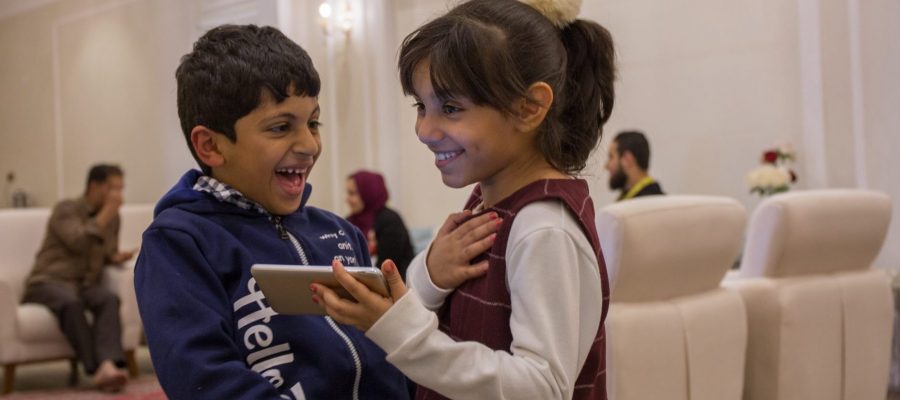In this first post in a series of blogs on the use of technology in the ELT classroom, National Geographic Learning’s in-house teacher trainer Alex Warren, looks to demystify and clarify what exactly is meant by the term blended learning.
Here’s the thing: everyone thinks they know what blended learning is, yet ask anyone what it is and you’ll get a range of different answers. Indeed, in researching this blog, I asked the same question to teachers and coordinators in different teaching contexts and every time I was presented with a slightly different answer – there were commonalities, but no definition that was universal.
Look online and, while the picture becomes clearer, there’s still some fogginess around it. Maybe that shouldn’t be so much of a surprise because as Sharma points out (ELT Journal, 2010), the term blended learning “has been in use for almost 20 years and its meaning has been constantly changing during this period.” And that was 8 years ago.
That said, three common definitions of blended learning have risen to the top of the pile in recent years. These are that blended learning is:
- a combination of face-to-face and online teaching
- a combination of methodologies
- a combination of technologies
Nonetheless, despite these somewhat conflicting definitions, the definition that seems to win in terms of general approval, usage and weight of research, defines blended learning as “any time a student learns at least in part at a supervised brick-and-mortar location away from home and at least in part through online delivery with some element of student control over time, place, path and pace” (Stoker, 2011). This is all well and good, but what – or rather how much – constitutes “in part?”
This calls into the question the depth, breadth and balance of the use of online teaching within a course. In many, generally larger educational institutes, blended learning is more of a 50:50 balance of online teaching and face-to-face classes, where the online content is formalised and part of the DNA of the course. In this respect content is often delivered formally through big, complex LMSs (Learning Management Systems) like Moodle, Edmodo and Blackboard. For many, this is the epitome of what blended learning should be.
Yet speaking to ELT teachers and coordinators this isn’t necessarily their understanding of it. Indeed, they generally have a looser, more relaxed definition: it is the use of technology both in and outside the classroom, but more as a tool for teachers (should they wish to use it) through which to offer variety and to support their learners. In other words, it is a flexible strategy for teaching their lessons.
For example, instead of using Moodle for key course content which students have to complete outside of class time, they use it to offer extra materials to students, to give homework, study tips and so on. It is then up to students how and if they access and use that content.
Alternatively, they might not even use an LMS at all. It might be a class blog or Facebook page. Some teachers incorporate mobile devices into their lessons, using apps already on the device, like cameras and recording devices, or apps developed specifically for language learning. In this respect, I would tend to edge towards Sharma and Barrett’s (2007) definition when they describe blended learning as “a combination of the face-to-face part of a course and an appropriate use of technology.”
So, where does that leave us with a final definition of blended learning? Well, as Westbrook (cited in Sharma 2010) suggests, “it might well be that the term itself is becoming diluted because the large number of definitions it has attracted means that almost any approach can be defined as blended learning.”
Having researched the topic in depth and spoken to a variety of people within ELT, I would like to suggest another definition for blended learning – “all of the above.” For me, blended learning is the strategic use of any technology – from the internet and LMSs to IWBs and mobile devices – as a tool for teaching that enhances learning, both in and outside the classroom, and offers learners more support, more opportunities for engagement, and ultimately, a more memorable learning experience overall in the classroom.
So, what’s your definition?
Join Alex next on September 19th for a webinar about Using Technology to Encourage Face-to-face Conversation.
Bibliography
Transforming Teaching, Sharma & Barrett, ETp 117
Blended Learning, Sharma & Barrett, Macmillan, 2009
A-Z of ELT, Thornbury
Blended Learning, Sharma, ELT Journal, 2010
Author: Alex Warren
Alex Warren is a DELTA trained teacher trainer with over 14 years’ experience of working in ELT as a teacher, academic director and teacher trainer. Working for National Geographic Learning, Alex is driven by his passion for developing teachers on a global scale and helping them to reach their true potential. A firm believer in a communicative approach to language learning and student centred learning, Alex enjoys working with innovative, thought-provoking materials and presenting on a wide range of ELT-related topics.



I am currently using google classroom and google sites to extend teaching time and it proves extremely useful. My students can choose whatever calls their attention in terms of activity types and topics.